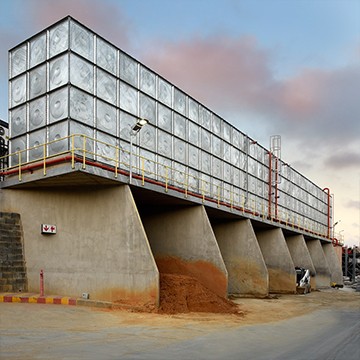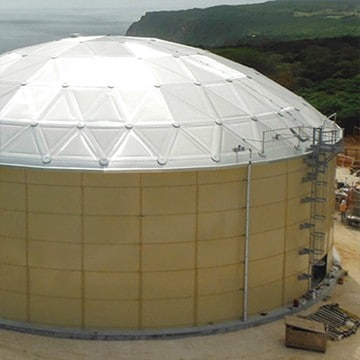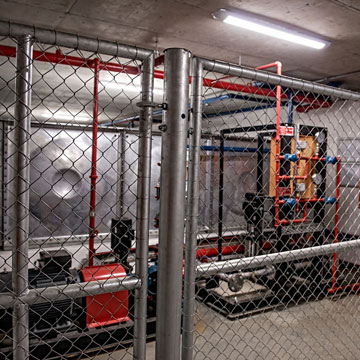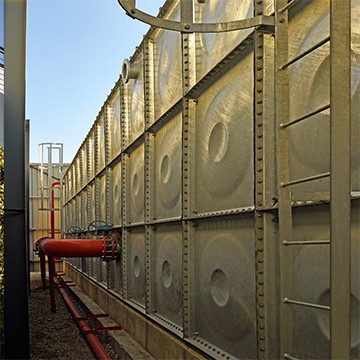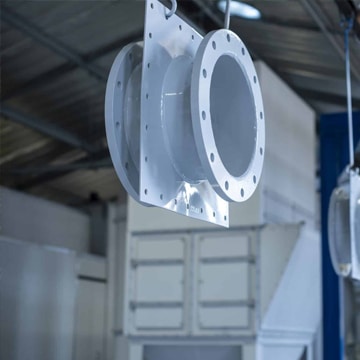Water is fast becoming Africa’s
most important currency.
Water is needed for success in agriculture, business, industry and mining – the pillars of our continent’s developing economies.
Without a cost-effective, convenient and stable water supply, every economy and community in Africa is at risk.
That’s why ABECO is the world’s first bank for the water business.
Think of our water tanks as water ‘banks’
We act like a ‘savings account’ so that your business has the water it needs to keep running even in times of water scarcity.
Select Your Water Storage Tanks Solution
Request a Quote
Complete the form below and one of our consultants will contact you
Our interest rate – who are our valued clients?

What we do
ABECO designs, manufactures (to national standards) and installs high quality underground, ground level, elevated, customized and circular bolted, sectional water storage tanks. ABECO has become the leading innovator in the development of water tank storage solutions in Africa. ABECO tanks was established in 1983.
Customer Testimonials
With more than 40 years of experience in delivering world class water tank solutions, ABECO Tanks has become a leading innovator in the development of steel water storage tank solutions.
ABECO Tanks takes pride in excellent customer service and client satisfaction whilst always being on the lookout for brilliant new technology that can be used to improve our tanks, designs and large tank construction. Our water tanks are SATAS-certified and comply with ISO standards.
ABECO Tanks aim to satisfy individual and unique needs of our clients by providing a wide range of solutions.
ABECO Tanks have always ensured that our product prices remain affordable and cost-effective and will continue to do so. As a leader of the industry, we aim to satisfy individual and unique needs of our clients by providing a wide range of water storage solutions and steel tanks for different uses.
Read More
Our Products are used in a large variety of sectors including, mining, power generation, processing, and manufacturing whilst having a large global reach such as Mauritius, Seychelles, and the Middle East.
ABECO Tanks supply top quality, extremely affordable, warranty protected pressed steel tanks that are highly efficient in all conditions. Our SATAS water tanks comply with International Standard Organization (ISO) standards. To find out more about our ISO water tanks in Africa, get in touch with our team.
ABECO’s Industrial Tanks are designed to hygienically contain water for all uses, from industrial to home use which includes easy transportation of dry bulk such as gravel and industrial materials with a number of dry bulk transportation solutions alongside hygienic water storage for all uses.
Many requirements for special tanks and industrial tanks can also be accommodated by ABECO Tanks, whether the client has a space restriction or obstructions. ABECO Tanks can supply new tanks – half panels, U-shaped, L-shaped, and other odd shapes if needs be. Partitions to divide tanks into two compartments can be provided and are commonly supplied for fire fighting water storage tanks.
The Most Popular Abeco Products for Storing Bulk Water:
- Aluminum domes
- Fire Tanks
- Elevated Water Tanks
- Desalination Water Tanks
- Reservoirs
- Galvanised Water reservoirs
- Pressed Steel water reservoirs
- Firewater tanks
- Desalination water tanks
- Rectangular Tanks: Our rectangular/square tank designs allow us greater versatility to customize and design cost-effective water tank sizes according to our client’s unique requirements and site specifications.
- Elevated Tanks: Elevated water tanks are commonly founded on a reinforced concrete basis with stub columns cast into excavations, which are backfilled after construction. The determining loads in elevated water tank foundation design and construction are dependent on the height of the tower.
- Circular Tanks: ABECO tanks have paid particular attention to the design and construction of our circular tanks to ensure that they are easy to install and suitable for most remote and inaccessible places where resources are limited. All components are also lightweight and easy to handle.
- African Tanks
- Custom Tanks: Many requirements for special tanks can be accommodated
ABECO Tanks are easily transported and unaffected by Ultra Violet rays and light penetration. Our galvanized panels are cold-pressed using yield stress drawing quality steel. Each panel is individually pressed and punched to ensure dimensional accuracy.
Simply – Our mission is as follows: “To work together with water tanks storage users and their service providers to satisfy their needs effectively and so doing, establish long-lasting relationships.”
Our products can be used for the following purposes:
- Biogas production
- Biogas storage
- Dry bulk storage
- Digester and Digesters
- Anaerobic digestion
The Significance of ISO and SATAS Standards in Water Tank Manufacturing
When it comes to water storage solutions, the adherence to strict standards is crucial to ensure quality, reliability, and durability. ISO (International Organization for Standardization) and SATAS (South African Technical Auditing Services) play pivotal roles in maintaining high production standards for water tanks. In this article, we will explore the importance of adhering to ISO and SATAS standards in water tank manufacturing, the challenges in ensuring tank quality, and why purchasing tanks that meet these standards is essential.
Understanding ISO and SATAS Standards
ISO is an independent international organization that develops and publishes standards for various industries. ISO standards define specific requirements for products, services, and systems to ensure consistency, quality, and safety. In the case of water tanks, ISO standards outline criteria for design, construction, materials, and performance.
SATAS, on the other hand, is a South African certification body that audits and certifies manufacturers’ compliance with relevant South African National Standards (SANS). In the context of water tanks, SATAS certification ensures that manufacturers meet specific requirements related to quality, performance, and durability.
Importance of ISO and SATAS Standards in Water Tank Manufacturing
Quality Assurance: Adhering to ISO and SATAS standards ensures that water tanks are manufactured using high-quality materials and processes. These standards set guidelines for design, structural integrity, and performance, minimising the risk of leaks, corrosion, or other failures.
Safety and Health: ISO and SATAS standards prioritise the safety and health of consumers. By meeting these standards, water tanks are constructed to withstand environmental factors, preventing contamination and ensuring the stored water remains safe for consumption and use.
Longevity and Durability: ISO and SATAS standards require tanks to be built to withstand various stressors such as weather conditions and internal pressure. Meeting these standards ensures the longevity and durability of tanks, reducing the need for frequent repairs or replacements.
Challenges in Ensuring Tank Quality
Maintaining high-quality standards in water tank manufacturing faces a few challenges, including:
Substandard Materials: Some manufacturers may cut corners by using inferior quality materials, compromising the overall quality and longevity of the tanks.
Improper Design and Construction: Inadequate design or construction practices can lead to structural weaknesses, poor sealing, or vulnerability to environmental factors.
Lack of Compliance Monitoring: Without proper monitoring and auditing, manufacturers may deviate from standards, leading to inconsistent quality across the industry.
The Steel Tank Manufacturing Process and Standards
Steel tanks, a popular choice for water storage, are manufactured with adherence to ISO and SATAS standards. The process typically involves the following steps:
Material Selection: High-quality steel, such as galvanized steel, is chosen to ensure corrosion resistance and structural integrity.
Fabrication: Tanks are fabricated according to specified designs, incorporating factors like shape, size, and structural reinforcements to meet ISO and SATAS requirements.
Coating and Sealing: Tanks are coated with protective coatings to prevent corrosion and sealed to ensure water tightness.
Quality Control: Throughout the manufacturing process, quality control measures are implemented, including inspections, testing, and certifications, to verify compliance with ISO and SATAS standards.
The benefit of higher quality tanks
Purchasing water tanks that adhere to ISO and SATAS standards offers numerous benefits.
Reliable Performance: Tanks manufactured to these standards provide consistent and reliable performance, ensuring uninterrupted water supply and minimising maintenance requirements.
Health and Safety: Compliance with ISO and SATAS standards guarantees that the stored water remains clean, safe, and suitable for various applications, including drinking, cooking, and irrigation.
Long-term Cost Savings: High-quality tanks have a longer lifespan and require fewer repairs or replacements, resulting in long-term cost savings.
Peace of Mind: Purchasing water tanks that adhere to ISO and SATAS standards provides peace of mind, knowing that the product has undergone rigorous testing and meets industry-approved quality benchmarks.
In conclusion, ISO and SATAS standards play a crucial role in ensuring the quality, reliability, and durability of water tanks. Adhering to these standards in manufacturing processes guarantees that tanks are built with high-quality materials, proper design, and structural integrity. By meeting ISO and SATAS standards, water tanks offer benefits such as reliable performance, enhanced safety, long-term cost savings, and peace of mind. When purchasing water tanks, it is vital to prioritise those that meet ISO and SATAS standards to ensure the highest quality and longevity of the product.


